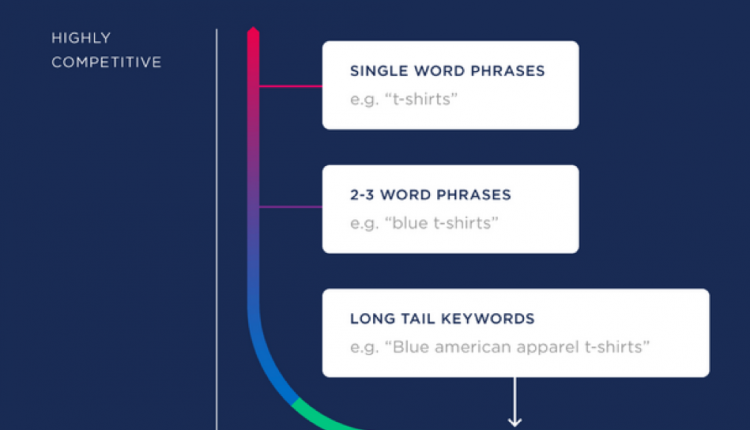Creating fresh and engaging content every day isn’t easy. The world of content creation is dynamic and fast-paced. You need to continually come up with content ideas that resonate with your audience.
If you’re willing to compromise on quality, you can create hundreds of lackluster posts easily. But that can damage the reputation of your business. To solidify your brand image, pillar content is essential. By producing pillar content, you can become the ultimate source for great content in your industry.
Before we delve into how you can create pillar content, let’s first understand the topic.
You can think of pillar content as the foundation of your overall content. In simple terms, pillar content is a piece of content that covers key areas in a niche. You can further break down your pillar content into related subtopics.
For example, let’s focus on the digital marketing niche. It’s a broad topic. Email marketing, SEO, PPC advertising, and other topics are all covered under it. Within each of these sub-topics (also known as topic clusters), there can be further derivative sections as well.
 Image via HubSpot
Image via HubSpot
Suppose you decide to create articles on a quality backlink strategy and how to research keywords. The broad category “SEO” unites both these sub-categories. So, that becomes your base for pillar content. Furthermore, if you have a single page that combines these two categories, it will be called a pillar page.
Generally, you’ll see pillar content in the form of blog posts, reports, guides, and ebooks. While infographics, videos, and photos aren’t examples of pillar content, they can help to provide context to the pillar content.
For a very long time, SEO experts have emphasized the importance of keywords to get better search rankings. Of course, it’s an essential factor to get ahead in the SERPs. However, the way people frame their search queries is changing.

Image via Backlinko
Through long-tail keywords, Backlinko boosted their organic traffic by 19.79% in 2 months. That’s because the search volume for long-tail keywords makes up a massive chunk of all Google searches. Furthermore, they’re low on competition but high on conversions.
Not just that, 70% of requests made to Google Assistant are expressed in conversational language, not with keywords. So, instead of looking for the best restaurants, people are more likely to ask, “Where can I go for Chinese food?”
To keep up with the changing search behavior of users, you need to shift to the topic clusters model. By focusing on creating content based on topics and sub-topics, you can make your site more organized.
Through this, you also make it easier for Google’s algorithm to understand your site architecture and find related content. Topic clusters help web crawlers make connections in your content. Ultimately, this can boost your visibility to search engines.
In this model, you’ll need to link each topic page or cluster page to the same pillar page. Similarly, the pillar page links back to each cluster page. Because of this web of internal links, when any page performs well, the whole cluster benefits from it. As engagement and search rankings increase, you can become an authority on the topic.
Pillar content differs from your standard blog post in many ways. It is unique, high-quality, comprehensive, and focuses on providing value to the reader.
So, it’s evident that creating pillar content requires a lot of extra effort. If you’re interested in creating your own pillar content, here is a short guide for you:
Creating content for a successful blog is always about what the reader wants. You need to create content that resonates with your target audience. To find out what appeals to your readers, you need to first understand your audience.
What is the age group of your audience? What are their interests? What are some of the issues that they face? What are they discussing on social media?
You need to find answers to these questions.
You can use tools like Google Analytics and Facebook Analytics to find out who your audience is. Next, try to get a glimpse into your audience’s mindsets. Look at the kinds of posts they are sharing and what they are discussing on social media.
Try to put yourself into the shoes of your audience. Think about the time when you were an amateur in your industry.
What were the questions you had? What were the problems you faced? Through these questions and insights, you’ll find ideas for your pillar content.
While keywords shouldn’t be your focus, you can’t completely ignore them. Once you’ve listed your audience’s interests, you can check the keyword search volume relevant to each topic. The results will give you a better understanding of what exactly people are looking for.
You can use a standard keyword analysis tool to find monthly search volume for each keyword. Use keyword clustering technique to find other popular keywords that you can use in your pillar content. Keyword clustering will immensely help you to stay ahead of the pack in the rapidly changing world of SEO.
For any topic or niche you pick, it’s evident that there is a lot of pillar content on the web already. Before you finalize your pillar content idea, make sure you know what you’ll be competing against.
Which means you need insights into your competitors in terms of their content and keyword strategies. To make your task easier, you can use a more specific competitor research tool such as SpyFu.

Image via Spyfu
You can also look at your competitors’ sites and see the kind of content they have created. See the way they have structured their topic clusters and look at their most popular posts. This will help you understand what kind of content works well.
Of course, you shouldn’t copy what they’re doing directly. Remember, your pillar content needs to be unique. So, while it’s great to take inspiration from, producing the same content would be counterproductive.
SEO expert, Rand Fishkin, is credited with coining the term, “10x content.” He defines it as content that is 10 times better than the other content available on the same keyword or topic.
After you’ve created the first topic cluster for your website, it is a good idea to work on creating your own 10x pillar page. Your 10x pillar page should focus on a core topic and explore it in-depth.
The focus of 10x content is not to create viral content but to answer the questions of your audience. Quality and reliability are essential components of good 10x pillar content.
The format for a 10x pillar page is similar to that of an ebook. Simply put, it’s like a comprehensive guide that allows people to download or save the page’s content.
The best way to create your own 10x pillar page is to focus on creating a downloadable resource. For this, you can combine a series of related articles that fit well together. For instance, you could combine articles about on-page SEO and off-page SEO together for a guide on SEO.
Just like topic clusters work, your 10x content pillar page can help you boost your search rankings. With a 10x content pillar page, Bright Gauge, a business intelligence platform, was able to rank on the first page of Google.
Creating pillar content and better inbound links would increase your website authority. Since, you're competing for attention with your competitors, a stronger website authority will help you rank higher on search engines. It will also help you increase credibility and trustworthiness of your content.
Have you used pillar content as a part of your content marketing strategy? Please share your views in the comments section below.